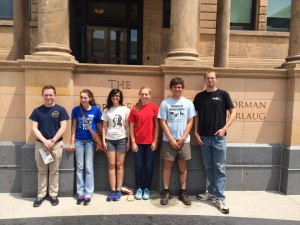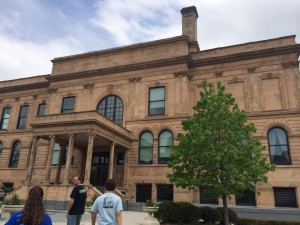When you begin to spend a significant amount of time looking into Iowa’s agricultural history it is not long before you run into the name Norman Borlaug. Considering how much of a big deal Borlaug is in the agriculture world I at first felt bad that I did not recognize his name. Today we went to the World Food Prize Museum which honors the winners of the World Food Prize, of which Borlaug is one of the most known partly because he is an Iowan. The building that the exhibit was in was just as interesting as the topic because it was an old public library that was far more elaborate and ostentatious than any library I’ve ever seen. I found it interesting that over 25 million dollars went to create a museum that memorialized people who had worked to solve world hunger and aid those in poverty.
Norman Borlaug is known to his supporters as working towards ending world hunger by creating a more productive breed of seed and introducing it to impoverished areas. His supporters, such as the World Food Prize folks consider him a hero. This is apparent from a quote on the wall when you walk into the World Food Prize laureate hall that credits Borlaug with saving more lives than anyone else. Before this visit I was more familiar with the controversies surrounding Borlaug’s work, particularly the Green Revolution, without knowing he was the man responsible for these developments. Paarlberg in “Food Politics” provides an overview of these controversies and helped me to begin to see both sides of the story.
While it is indisputable that the seeds Borlaug developed significantly increased yields and allowed more people to have access to affordable food than ever before, it seems unwise to not take into account the consequences. These include environmental damage from pesticides, fertilizers, and water run-off, as well as reduced biodiversity all of which are damaging to the land and unsustainable in the long-term. Paarlberg seems to consider these consequences to be preferable to the alternative, in which many regions total environmental degradation would have been the only option in a scramble to avoid massive famines. However, I do not think this a good enough justification for the continued practice of Green Revolution type agriculture if it is having all these negative impacts. I would be interested to learn more about alternative models such as the agroecology Paarlberg mentions in his book.



